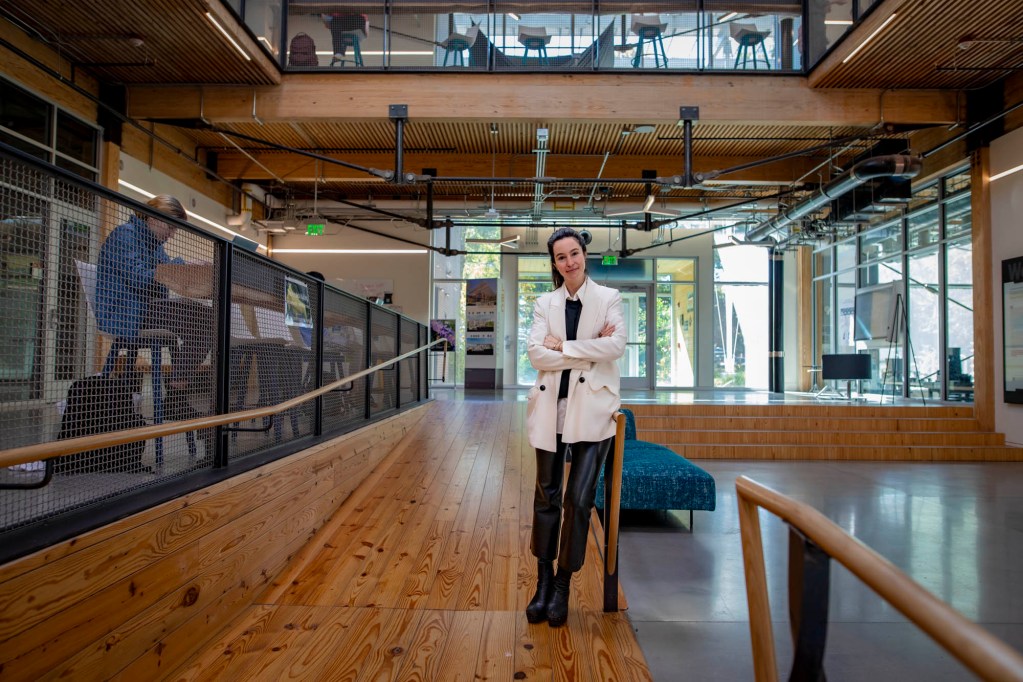
In the heart of Midtown Atlanta, the Georgia Institute of Technology campus was bustling with activity on a recent chilly Monday morning. Students scurried from building to building, and a bicyclist nearly clipped me as he rounded a corner and onto the path where I was walking with Birney Robert. We laughed and I remarked about how long it had been since I stepped foot on a college campus. For Robert, this is all business as usual.
At Georgia Tech, Robert is the Principal Investigator and Curator of the Center for 21st Century Universities (C21U) and -Microsoft Accessibility grant. She is also an Event Coordinator at the College of Computing, a role she has held for more than nine years.
Robert’s CV includes a BFA in studio art from Birmingham Southern College, a master’s degree in Museum Anthropology from Georgia State University, and more than three years working as Gallery Manager at Sandler Hudson Gallery.
At Sandler Hudson, Robert oversaw administrative tasks as well as managing exhibitions, events, and facilitating art sales. She has used those same event management skills for roles at Burnaway, Emerging Collective, and her work as a curator at Arts & Entertainment Atlanta.
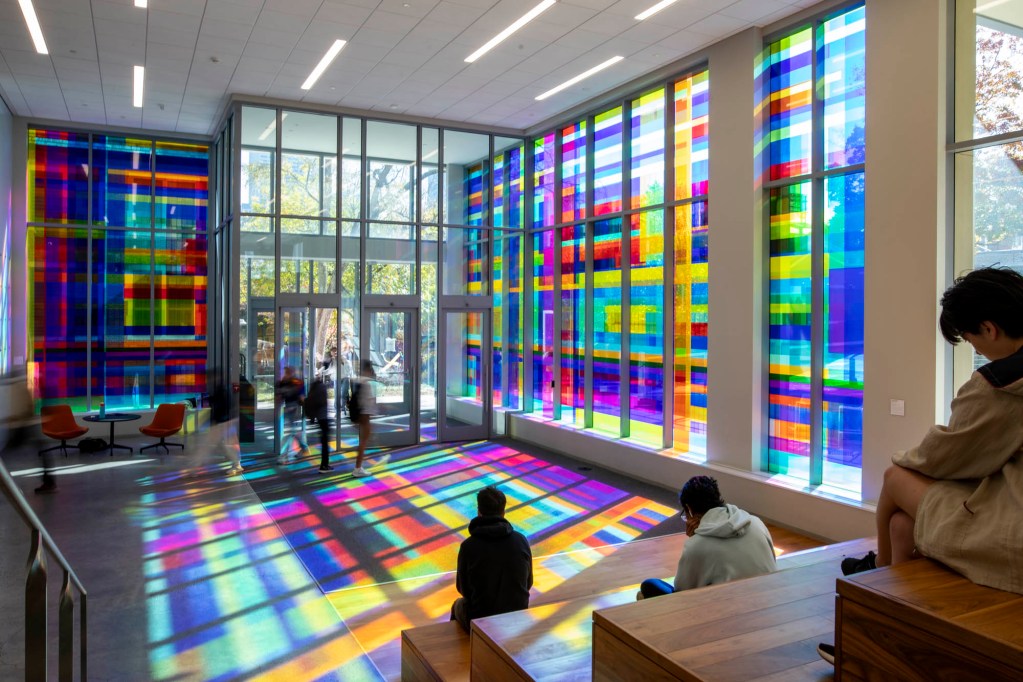
On the day that I visited with Robert, she took me on a personalized tour of the art exhibitions she curated, as well as the existing art and art initiatives on Georgia Tech’s campus . We saw a plethora of art installations and innovative art experiences ranging from large outdoor sculptures to tech-driven art displayed on screens, indoor art exhibits, and even an art vending machine.
Poised at the intersection of art, technology, science, and accessibility, Robert has been at the helm of some of the school’s most innovative art activations at Georgia Tech.
“I am interested in demystifying science and technology to a broader audience, but also demystifying conceptual art to a scientific community,” explained Robert. In 2021, Robert got a $40,000 grant from C21U and Microsoft which she supplemented with $21,000 in fundraising efforts thanks to the College of Computing, the Library, Georgia Tech Arts, and the Office of Sustainability to install the two exhibitions; Extension of Self and Extension of Community. A dance performance and film screening of Full Radius Dance in Extension of Self was also part of these exhibits thanks to partnership with Georgia Tech Arts.
The exhibits bring into frame the question of humanity and society within the context of an increasingly digital world. She seeks to explore how art could be used as a means of communication for complex scientific and technological topics such as identity, climate change, and the interactions between humans and the natural world.
Accessibility is another tenet at the center of every installation that Robert champions.
By utilizing technological advances incorporated into these displays, such as directed speakers that track viewers as they move through an exhibit in order to offer pointed audio that accompanies related portions of the exhibit. She has endeavored to provide outlets for the public to come onto the Georgia Tech campus and experience the art on display there for free, removing yet another barrier between the public and art.
Robert hopes to use these art installations and exhibitions to help bridge the accessibility gap between academics, science, math, technology, and the general public, regardless of their native understanding of the topics at hand.

The Georgia Tech Library, the Kendeda Building for Innovative Sustainable Design, the Library’s Media Bridge, and the Ferst Center for the Arts are the four sites for Robert’s two exhibits and one performance.
All the buildings serve vital functions for Georgia Tech and the content and curation of the Extension Exhibits. The Library is home to various arts initiatives such as the Artist-in-Residency program, a state-of-the-art gallery, and is a place for housing scholarship, knowledge making, creativity, and art exhibits.
The Library’s media bridge connects scholarship from one Library building to the next through an interactive digital media display which invites visitors to look up and engage with virtual scholarship and art.
The Kendeda Building is the first building in Georgia and the 28th in the world to earn a Living Building Challenge (LBC) certificate. The Kendeda Building generates more power than it uses, making it an ideal location to showcase art exhibits at the intersection of sustainability, technology, and science. The Ferst Center for the Arts is one of Georgia Tech and Atlanta’s premier venues for showcasing immersive dance productions and innovative art installations.
Some of the art installations from Extension of Community that caught my eye included “The Peach Pit,” displayed on the Library’s outdoor digital media bridge, which is a geospatial data visualization of pollution as it disproportionately affects Black communities in Georgia. Artist Adira Griffin, a recent grad of Savannah College of Art and Design, did extensive research into Superfund sites, a designation of highly polluted areas as demonstrated in maps by the U.S. Environmental Protection Agency. The interactive digital motion artwork is projected on the Media Bridge and uses patterns, symbols, and paths to raise awareness of this ongoing humanitarian issue.
Jeremy Bolen’s immersive “Sulfur Skies” installation at the Kendeda Building, which highlights a concept of solar radiation management wherein sulfur particles are injected into the stratosphere to counteract global warming. Visitors are invited to lay on silver mats under the installation, gazing up at the sulfuric night sky with artificial solar-powered stars.
A corresponding work at the Georgia Tech Library “At the Core of the Core” began with a CT scan of a 127-year old sediment core that the Anthropocene Working Group (AWG) believes to be the marker of the Anthropocene. Bolen documented this sediment core on a recent research trip to Searsville Lake at Jasper Ridge Biological Reserve in Stanford, California in 2022.
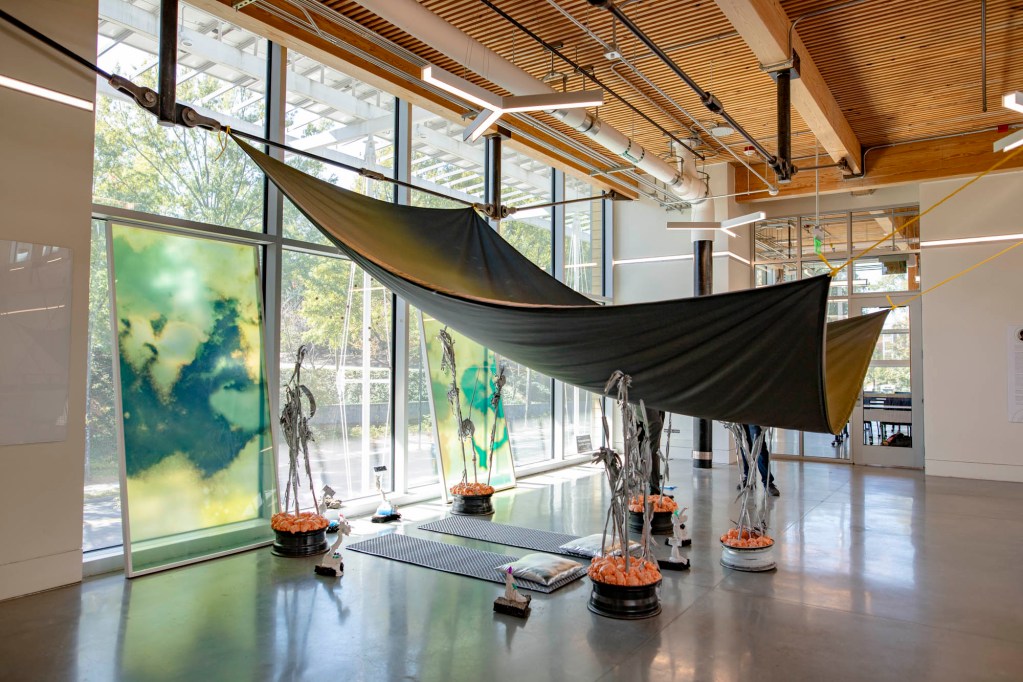
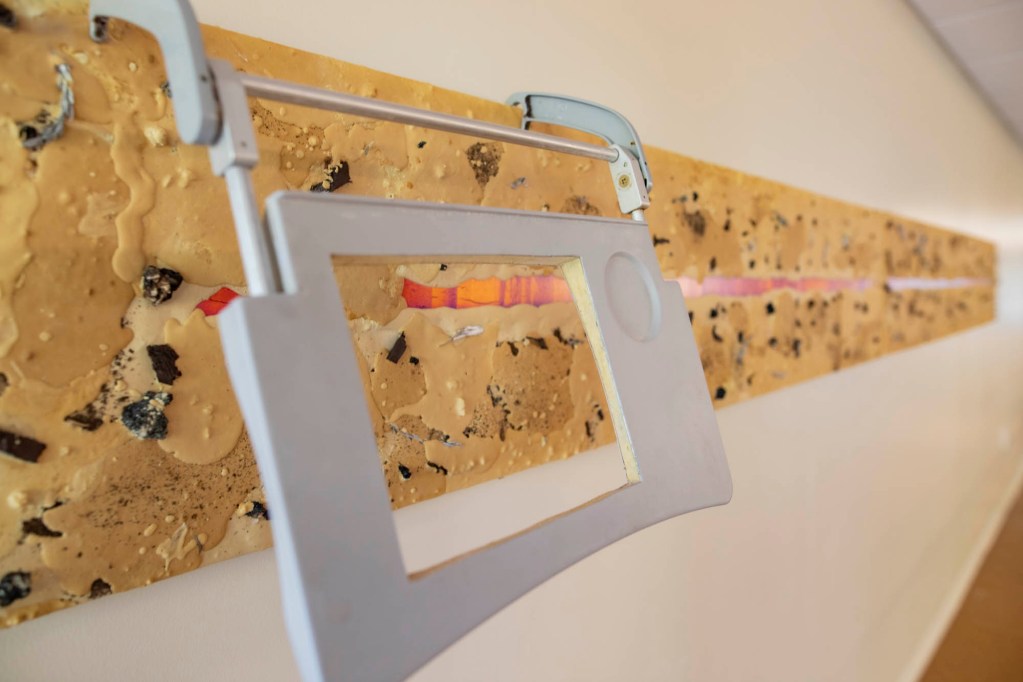
Regent’s Professor at Georgia State University Pam Longobardi’s “Drifter’s Project”, installed at the Kendeda Building and the Library, offers compelling portraits of plastic debris from the world’s oceans. The 3D installation of a cornucopia spilling out remnants of humanity’s consumerism as well as photographs of collections of found objects remind us of the impact of plastics and late-stage capitalism on our planet.

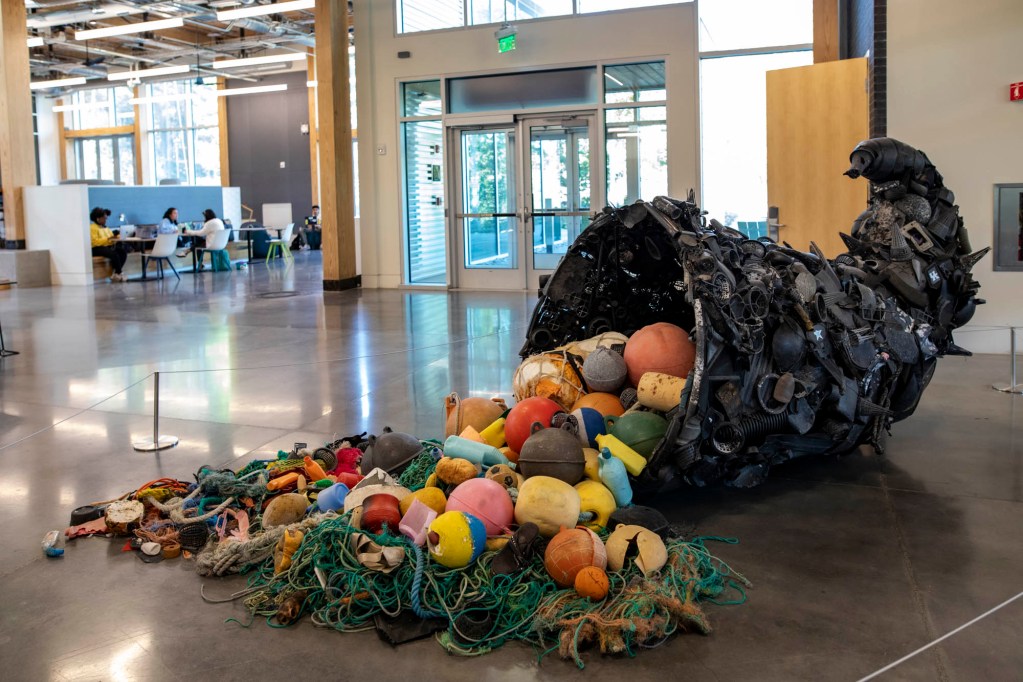
Artists Sylvia Janicki and Nassim Parvin’s installation, “Sensing Bodies” is within the Kendeda Building and the Library. In the works, plants are set up to record biometric input from human breath or touch, and one piece which looks almost like a mirror until you draw close enough to trigger LEDs that reveal the plant inside. This installation encourages viewers to intimately engage with plantation plants which further allow us to consider colonial histories and human narratives.
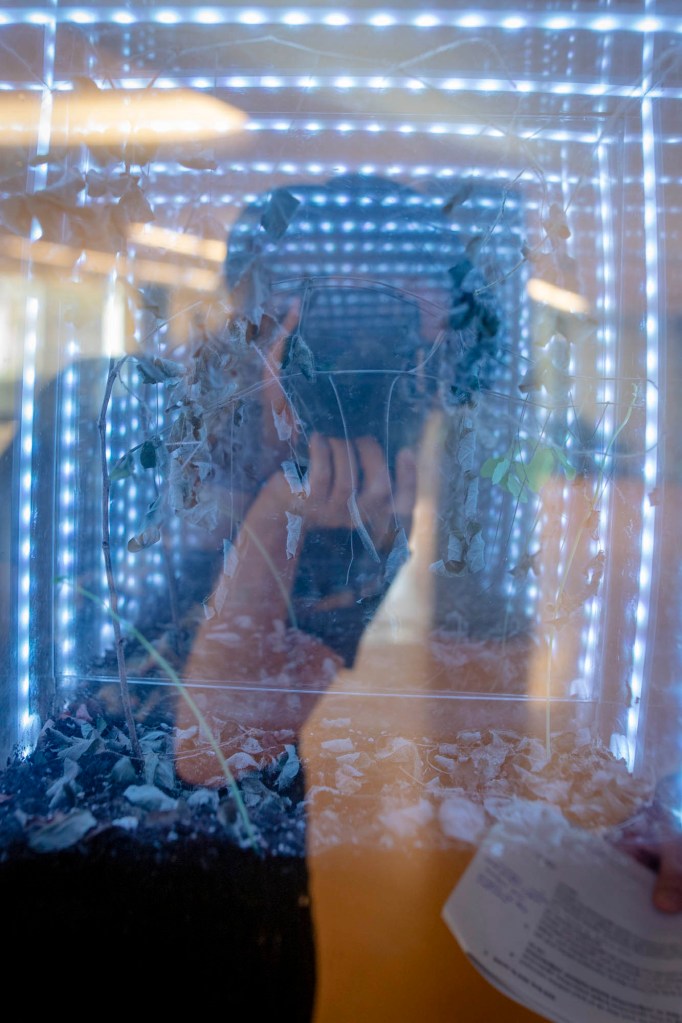


In addition to all of her work at Georgia Tech to bring art, science, and technology together, Robert has also championed these same ideals through Extension of Nature, an outdoor exhibit presented in conjunction with Arts and Entertainment Atlanta.
In the program, she brought in artists whose works explore what it means to be sustainable in digital and urban environments. The focus centered around four themes, plants and seeds, plastics and waste, imaginary environments, and relationships. The program featured ten artists and ran on digital billboards around downtown Atlanta for five months from June 2023 through August 2023.
These days, Robert is leaning even more into her love for art and seeking ways to increase Georgia Tech’s interactions with artists both locally and from afar. I asked her what her hopes were for the future at Tech, and she told me that she would like to see a Museum and Residency Program at the innovative intersection of art, science, and technology come to life there.
“Museums are an academic unit in and of themselves,” she explained. “You can have disciplines within the museum to study and get certificates from that program, and the museum can be its own college.”
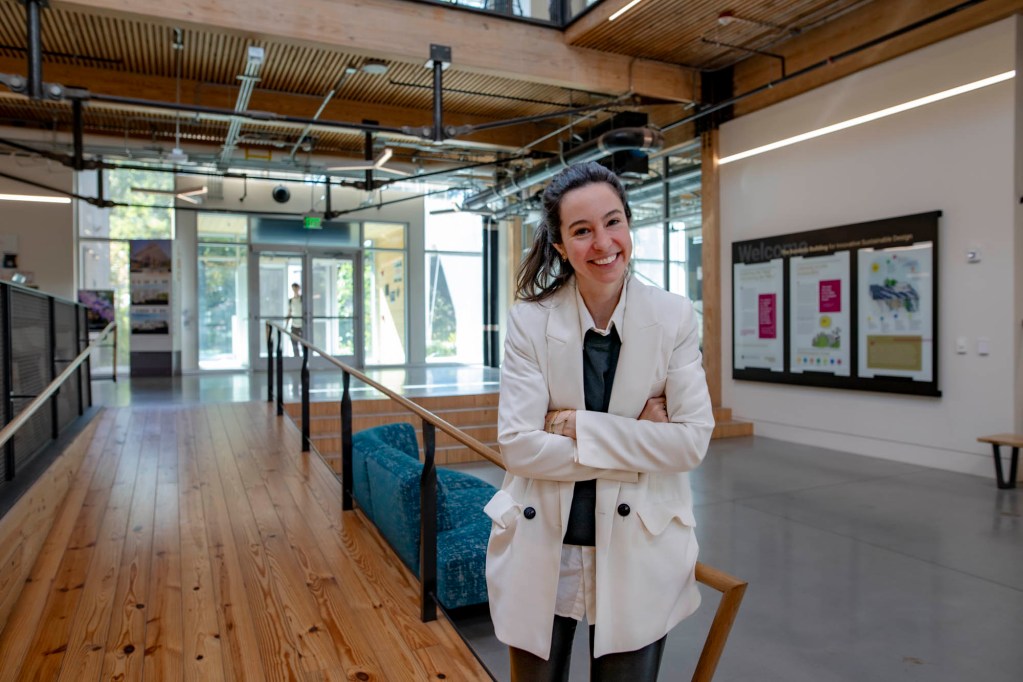
Robert also highlighted the new center for interdisciplinary studies in media arts, which will teach students how to begin with a foundation of digital media and then practice those skills in studio courses, labs, and research.“The center’s focus is enhancing artistic expression on campus, preparing students for careers as creative makers and innovators, and helping faculty develop creative approaches to improving scientific and technological research and outreach.”
With a palpable passion for the arts, curatorial experience in one of Atlanta’s finest galleries, and the kind of drive that makes even the impossible seem within reach, Robert is truly a remarkable advocate for the arts at the Georgia Institute of Technology.
